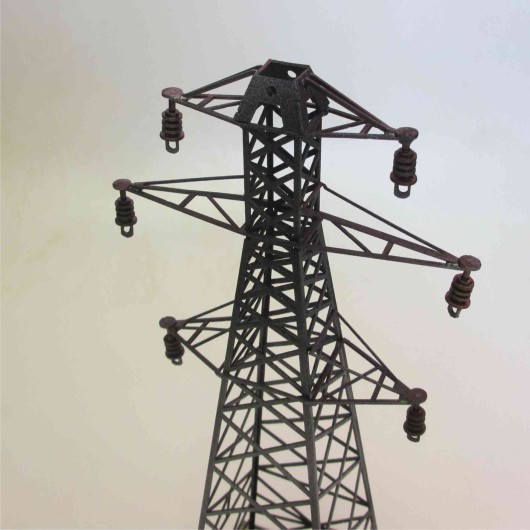
Our pylon kit is a multi-part laser-cut kit in marine-grade plywood and dowel. Designed to be easily assembled and fixed with thin superglue for a 280mm tall (15m at 1/55 scale) scenic element suited for any number of post-war and near future wargame settings.